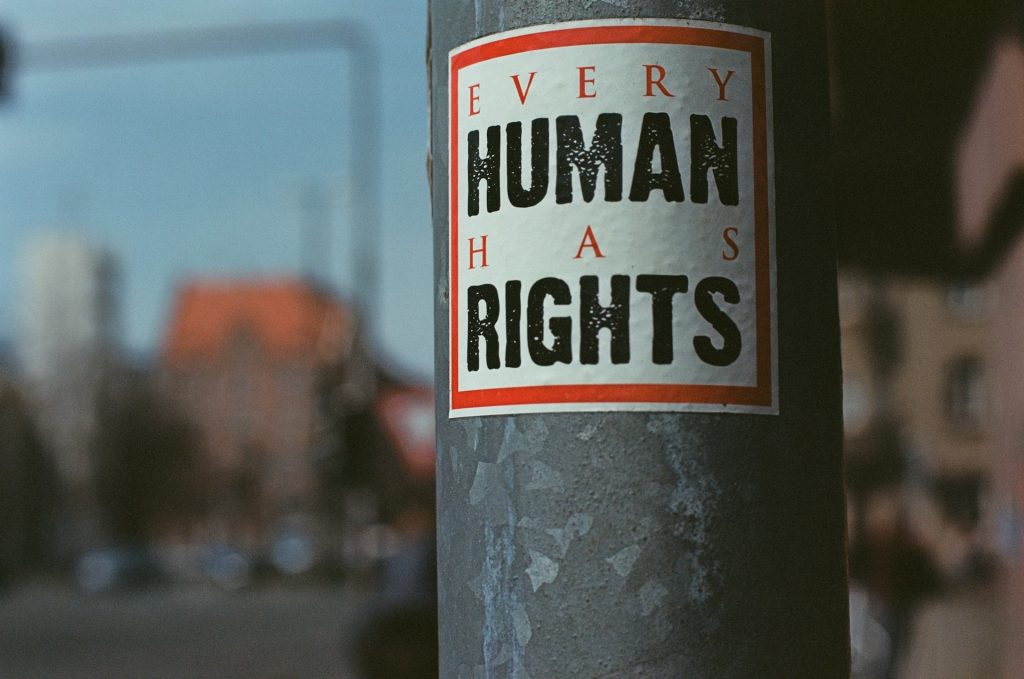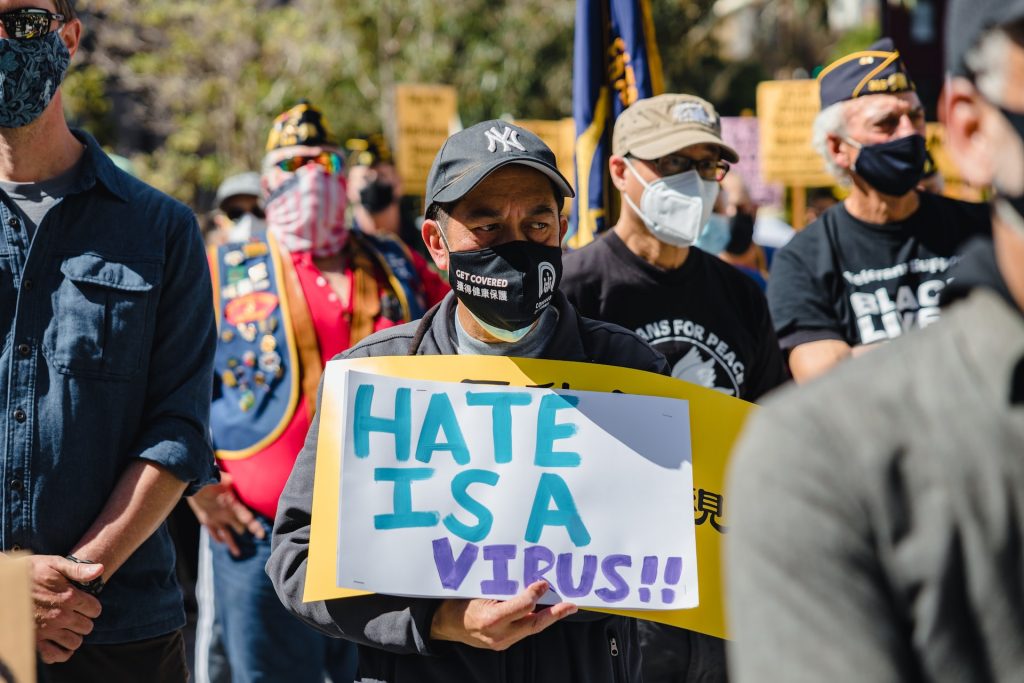
The digital age has brought about unprecedented connectivity and technological advancement and has facilitated sharing of information and ideas globally. However, it has also given rise to new challenges and issues that must be addressed to ensure the protection of human rights, the promotion of peace, and the delivery of justice.
Protecting human rights in online spaces is essential, just as in real life. This includes protecting the right to privacy, freedom of expression, and the right to assemble peacefully. With the widespread use of social media and other digital platforms, it is important to ensure that users are not subjected to online surveillance or censorship.
Harassment and hate speech has become increasingly common online, and addressing these issues is crucial to ensuring a peaceful and just society.
Understanding Human Rights in the Digital Age

Online harassment and hate speech are when offensive comments, posts, or messages are made about a person, group, or entity using online tools or platforms. Despite the fact that both terms are frequently used interchangeably, they refer to two different activities or context.
Online harassment is when someone or a group is repeatedly hurt, insulted, or threatened. Hate speech is any communication that encourages violence against a person or group because they are a member of a certain social group. Hate speech and online harassment have negative effects on people and society as a whole. They can lead to human rights violations like freedom of speech and similar digital technologies access.
Everyone must come together to safeguard human rights such as freedom of expression, peace, and justice around the world.
Protection of Human Rights and privacy in the digital age

Online harassment and hate speech are pervasive issues today. Addressing these issues requires a multifaceted approach that includes legal action, education, and social change. Here are some of the approaches and mechanisms used to address online harassment and hate speech:
Legal Action
Governments and organizations have implemented laws to combat online harassment and hate speech and have established legal mechanisms to address these issues. Legal action can be taken against individuals who perpetrate online harassment or hate speech, which can deter such behaviors.
However, legal action is limited by jurisdiction and the ability to identify the perpetrators, particularly in cases where anonymity is used.
Education and Awareness

Educating individuals on the impact of online harassment and hate speech can help prevent such behaviors from occurring. This involves creating awareness campaigns and providing resources and training for individuals to identify and report harassment and hate speech. Such efforts, however, must be coupled with a culture of respect and tolerance to be effective.
Self-regulation by Digital Platforms
Online platforms have established community standards to regulate user behavior on their platforms. These standards are enforced through various mechanisms like community-based reporting, algorithmic detection of harmful content or human content moderators.
However, there are concerns about the impartiality of platform moderation and the challenges of building a framework and regulating online spaces, particularly those with different legal and cultural standards.
Social Change and Dialogue
Addressing online harassment and hate speech requires social change beyond online platforms’ structures. This includes promoting tolerance, empathy, and civility in mainstream discourse, developing counter-narratives to extremist messages and addressing underlying factors such as unequal power dynamics and marginalization.
Effectiveness and Limitations of Approaches
Each approach has its effectiveness and limitations in addressing online harassment and hate speech. Legal action can deter perpetrators, but its effectiveness can be limited by jurisdiction, law enforcement, and the ability to identify perpetrators. Education and awareness campaigns are critical for prevention but limited by changing attitudes and cultural values.
Self-regulation by online platforms has the potential to make online spaces safer but requires the effective implementation and enforcement of standards. Social change and dialogue need time, ongoing efforts, and support from different stakeholders to bring about lasting change.
Addressing online harassment and hate speech requires a multifaceted approach involving legal, technological, and social mechanisms. Effective solutions require collaboration and collective efforts among everyone and innovative solutions that keep pace with the changing nature of online behavior.
Technology has played positive and negative roles in enabling online harassment and hate speech. While technology has provided a platform for communication, it has also enabled anonymous and targeted attacks on individuals or specific groups. To address this issue, technological innovations can be harnessed to mitigate the effects of online harassment and hate speech.
Enabling Online Harassment and Hate Speech

Some technology platforms allow users to maintain anonymity, enabling them to post comments and messages without accountability. This can result in more hate speech, cyberbullying and harassment.
The internet provides an ecosystem where content can go viral, with a potential audience of millions of people. Some users create or repost hate speech, misinformation and conspiracy theories that can further amplify hate speech and harassment.
Steps to Address Online Harassment and Hate Speech
- Artificial Intelligence (AI): AI can be used in various ways to detect and act against online harassment and hate speech. For example, AI algorithms can detect harmful comments and alert content moderators for further review. It can also classify hate speech based on the severity of the language used and contextualize it to understand the intent behind a post.
- Online ID Verification: Online ID verification can mitigate anonymity on social media and online platforms, making users more accountable for their actions. Twitter’s blue checkmark or Instagram’s verified account badge serves as an online ID verification for public figures and celebrities, reducing the risk of impersonation.
- Reporting Features: Social media platforms allow users to report offensive content and flag inappropriate messages, comments or posts. Reporting features exist as a crowd-sourced way to counteract hate speech, harassment and cyberbullying.
- Unilever: Through its Unilever Human Rights Principles initiative, Unilever has committed to respecting human rights as part of its business operations and its wider impact within the global economy.
- Ben & Jerry’s: The Ben & Jerry’s Foundation is a B Corp social purpose organization that promotes access to digital rights, increases civic participation, and reduces the risk of online risks such as digital surveillance or cybercrime for communities at risk of exclusion from the digital world.
- Patagonia: As part of its mission to defend our planet, Patagonia works in partnership with organizations like Access Now who advocate for freedom of expression, privacy and data protection, among other digital rights issues globally.
Examples of Technological Innovations in Addressing Online Harassment and Hate Speech
- Perspective API: Developed by Jigsaw, Perspective API uses machine learning to automatically detect and score the ‘toxicity’ of online comments, helping moderators review flagged content.
- Facebook’s Automatic Hate Speech Detection: Facebook’s artificial intelligence can detect 80% of hate speech without human involvement, thereby reducing the burden of moderation.
- Twitter’s Keyword Filters: Twitter allows users to filter out messages or keywords, keywords, and phrases that contain abusive language, slurs, and derogatory terms.
In conclusion, technology has played a significant role in enabling online harassment and hate speech. However, innovative technological solutions can also be harnessed to address these problems to identify and target those who perpetrate harassment and hate speech. As technology evolves, it is important to continue and create newer methods to combat these issues in online spaces.
The Way Forward
Online harassment and hate speech are complex issues requiring collaboration between different people. Legal action must be updated to reflect the complexities of online spaces, technological solutions such as automated content moderation tools or online ID verification systems can make online spaces safer, and social change requires long-term efforts to promote online literacy among users and foster a culture of civility in mainstream discourse.
Strategies for promoting human rights, peace, and justice in the digital era must include:
- campaigns against gender-based violence or cyberbullying directed at vulnerable communities,
- regulations on online infrastructure,
- raising awareness amongst citizens about training opportunities related to technological skills, and
- working with policymakers around data protection measures.
These strategies will help create a safe environment where people can freely express their opinions while engaging in constructive dialogue, leading toward global peace and justice.
To Wrap Up
Online harassment and hate speech are serious social issues that harm individuals, peace and justice worldwide. While legal action must be taken to define cyber crimes and punish perpetrators properly, technological solutions should also be used to help protect vulnerable users from online abuse. At the same time, users should raise greater awareness of counter-narratives to extremist messages to promote digital literacy and foster a culture of civility in mainstream discourse.
Finally, stakeholders like governments, media organizations and civil society groups must join efforts to develop strategies to protect human rights in physical and virtual spaces, ultimately leading toward global peace and justice. Addressing online harassment and hate speech is essential for promoting human rights, peace and justice in the technological age.
